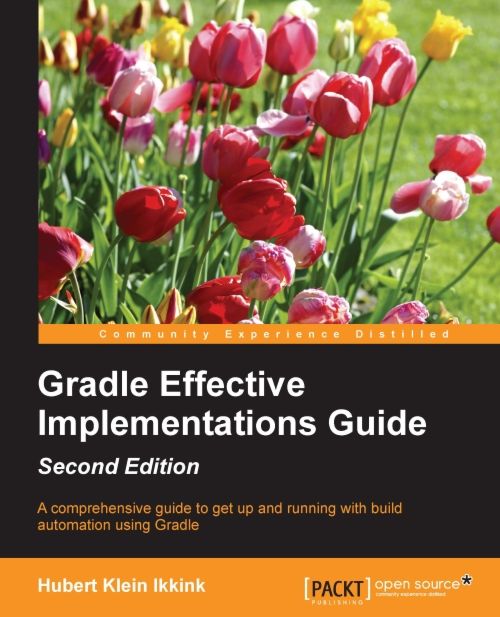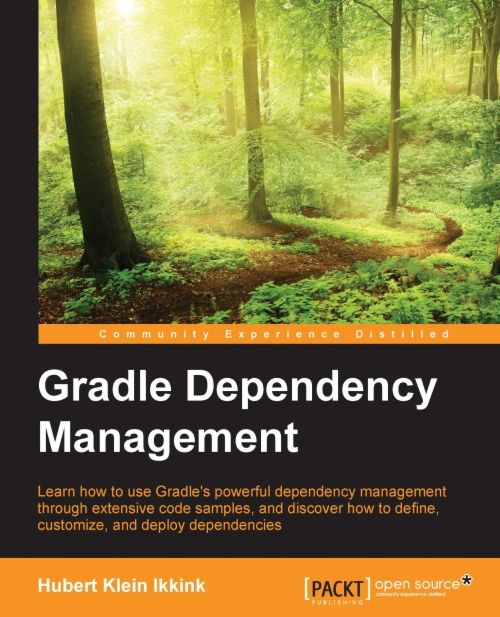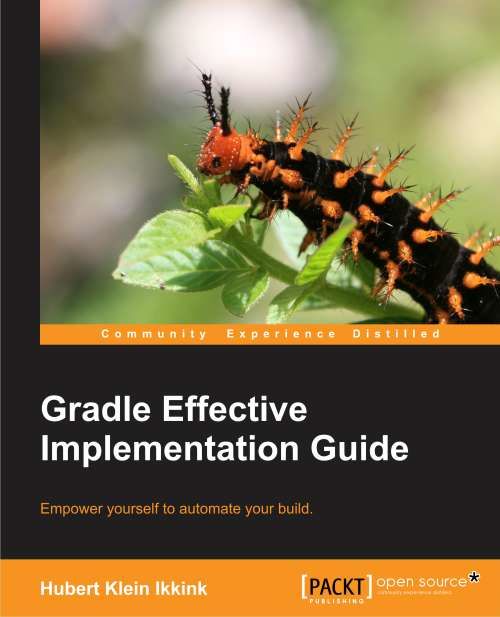The last couple of years I’ve worked on different books. On this page is a list of all the books I have published. Some of the books are published on Leanpub. You can directly go to my author page.
 In 2016 I have written the book
Gradle Effective Implementation Guide Second Edition
for Packt Publishing.
The book is a great introduction and reference for using Gradle.
The Gradle build language is explained with hands on code and practical applications.
You learn how to apply Gradle in your Java, Scala or Groovy projects, integrate with your favorite
IDE and how to integrate with well-known continuous integration servers.
In 2016 I have written the book
Gradle Effective Implementation Guide Second Edition
for Packt Publishing.
The book is a great introduction and reference for using Gradle.
The Gradle build language is explained with hands on code and practical applications.
You learn how to apply Gradle in your Java, Scala or Groovy projects, integrate with your favorite
IDE and how to integrate with well-known continuous integration servers.
You will quickly learn the basics of Gradle, how to write tasks, work with files and how to use write build scripts using the Groovy DSL. Then as you develop you will be shown how to use Gradle for Java projects. Compile, package, test and deploy your applications with ease. When you’ve mastered the simple, move on to the sublime and integrate your code with continuous integration servers and IDEs. By the end of the "Gradle Effective Implementation Guide" you will be able to use Gradle in your daily development. Writing tasks, applying plugins and creating build logic will be second nature.
 In 2015 I wrote a book specifically about dependency management in Gradle for Java: Gradle Dependency Management.
Gradle Dependency Management defines dependencies for your Java-based project and customizes how they are resolved. You will learn how to configure the publication of artifacts to different repositories. Packed with plenty of code samples, you will understand how to define the repositories that contain dependencies. Following this, you will learn how to customize the dependency resolution process in Gradle.
If you work on Java projects, use Gradle as a build automation tool, and you use dependencies in your project, this is the book for you. Additionally, if you want to deploy your project artifacts as dependencies for other developers using Gradle, you’ve found the right book.
In 2015 I wrote a book specifically about dependency management in Gradle for Java: Gradle Dependency Management.
Gradle Dependency Management defines dependencies for your Java-based project and customizes how they are resolved. You will learn how to configure the publication of artifacts to different repositories. Packed with plenty of code samples, you will understand how to define the repositories that contain dependencies. Following this, you will learn how to customize the dependency resolution process in Gradle.
If you work on Java projects, use Gradle as a build automation tool, and you use dependencies in your project, this is the book for you. Additionally, if you want to deploy your project artifacts as dependencies for other developers using Gradle, you’ve found the right book.
 In 2012 I have written the book
Gradle Effective Implementation Guide for Packt Publishing.
The book is a great introduction and reference for using Gradle.
The Gradle build language is explained with hands on code and practical applications.
You learn how to apply Gradle in your Java, Scala or Groovy projects, integrate with your favorite
IDE and how to integrate with well-known continuous integration servers.
In 2012 I have written the book
Gradle Effective Implementation Guide for Packt Publishing.
The book is a great introduction and reference for using Gradle.
The Gradle build language is explained with hands on code and practical applications.
You learn how to apply Gradle in your Java, Scala or Groovy projects, integrate with your favorite
IDE and how to integrate with well-known continuous integration servers.
Start with the foundations and work your way through hands on examples to build your knowledge of Gradle to skyscraper heights. You will quickly learn the basics of Gradle, how to write tasks, work with files and how to use write build scripts using the Groovy DSL. Then as you develop you will be shown how to use Gradle for Java projects. Compile, package, test and deploy your applications with ease. When you’ve mastered the simple, move on to the sublime and integrate your code with continuous integration servers and IDEs. By the end of the "Gradle Effective Implementation Guide" you will be able to use Gradle in your daily development. Writing tasks, applying plugins and creating build logic will be second nature.
In 2013 I have bundled the Groovy Goodness blog posts into a single electronic publication: Groovy Goodness Notebook.
The book contains the blog posts bundled into categories.
The posts have been slightly edited, but mainly for formatting purposes.
It gives a broad and in-depth overview of common and more hidden features of Groovy.
Features are explained with a lot of code, so it is very practical.
The book is published at Leanpub and is available in two formats: PDF and EPUB.
Updates are available for free.
So any new Groovy Goodness blog posts will be added to the book and those updates are free if you have bought the book.
The book is also available in a bundle with the Gradle Goodness Notebook.
Since then I also bundled blog posts about Gradle, Asciidoctor, Spock, Clojure, DataWeave, Ratpack and Grails into e-books available at Leanpub. The following is a list of all books in the Notebook series: